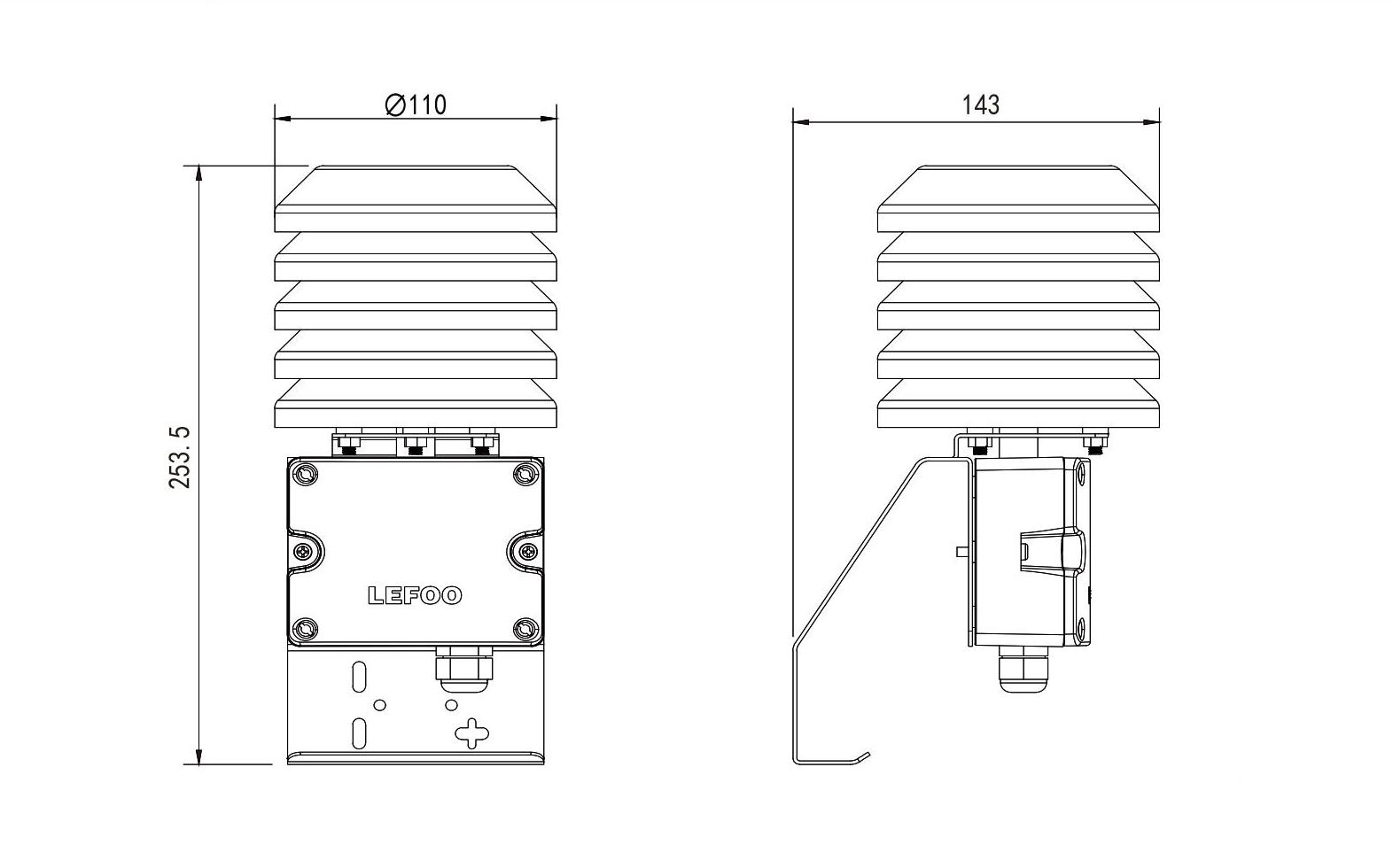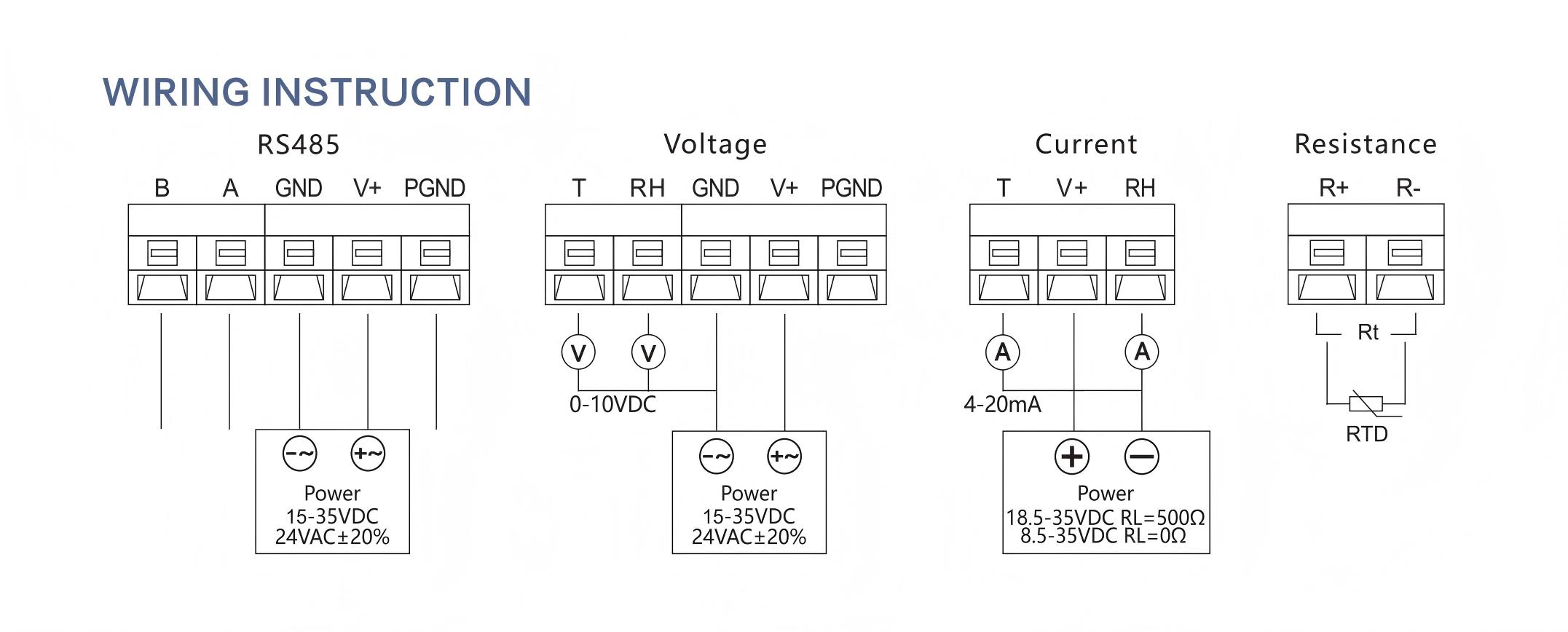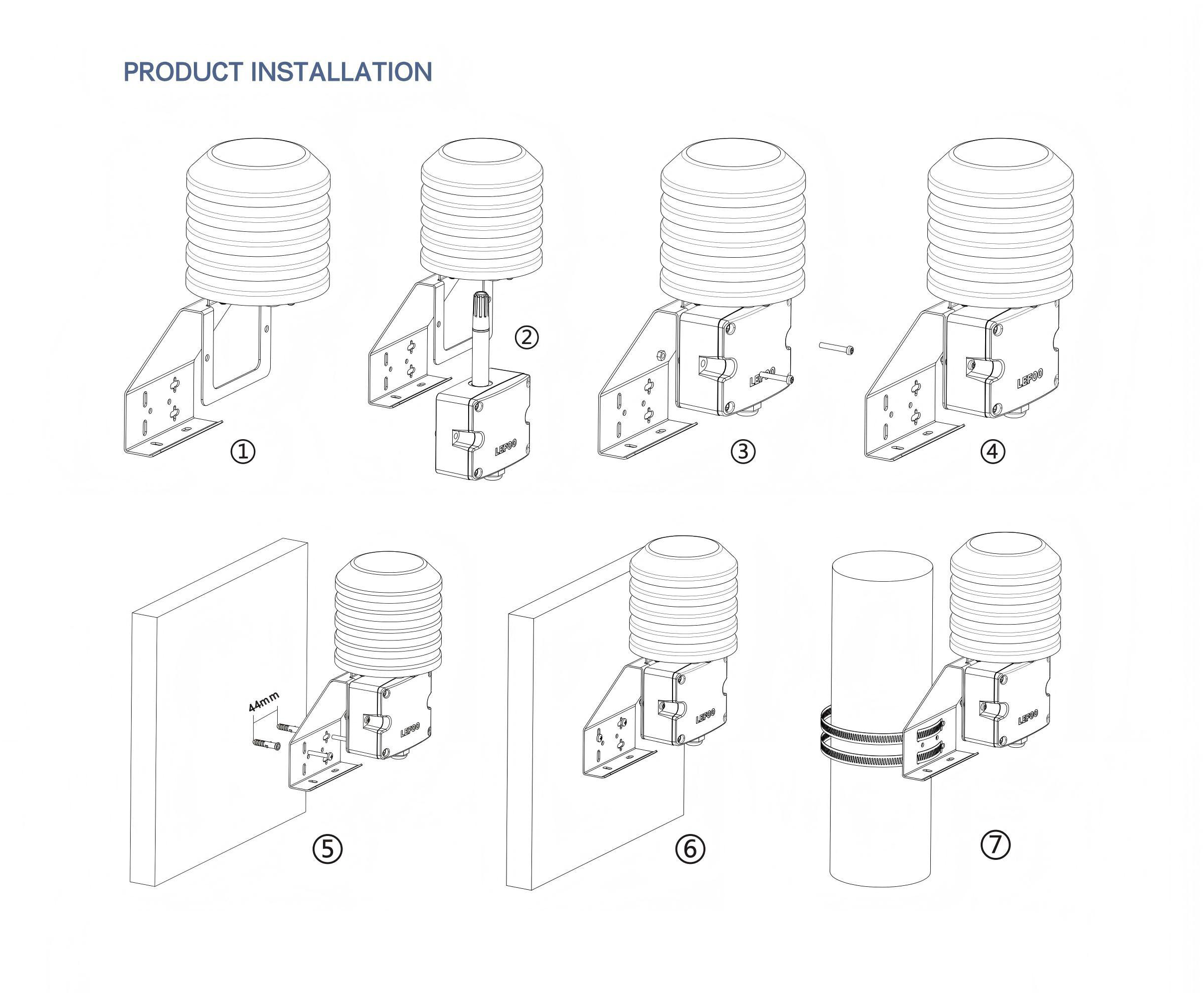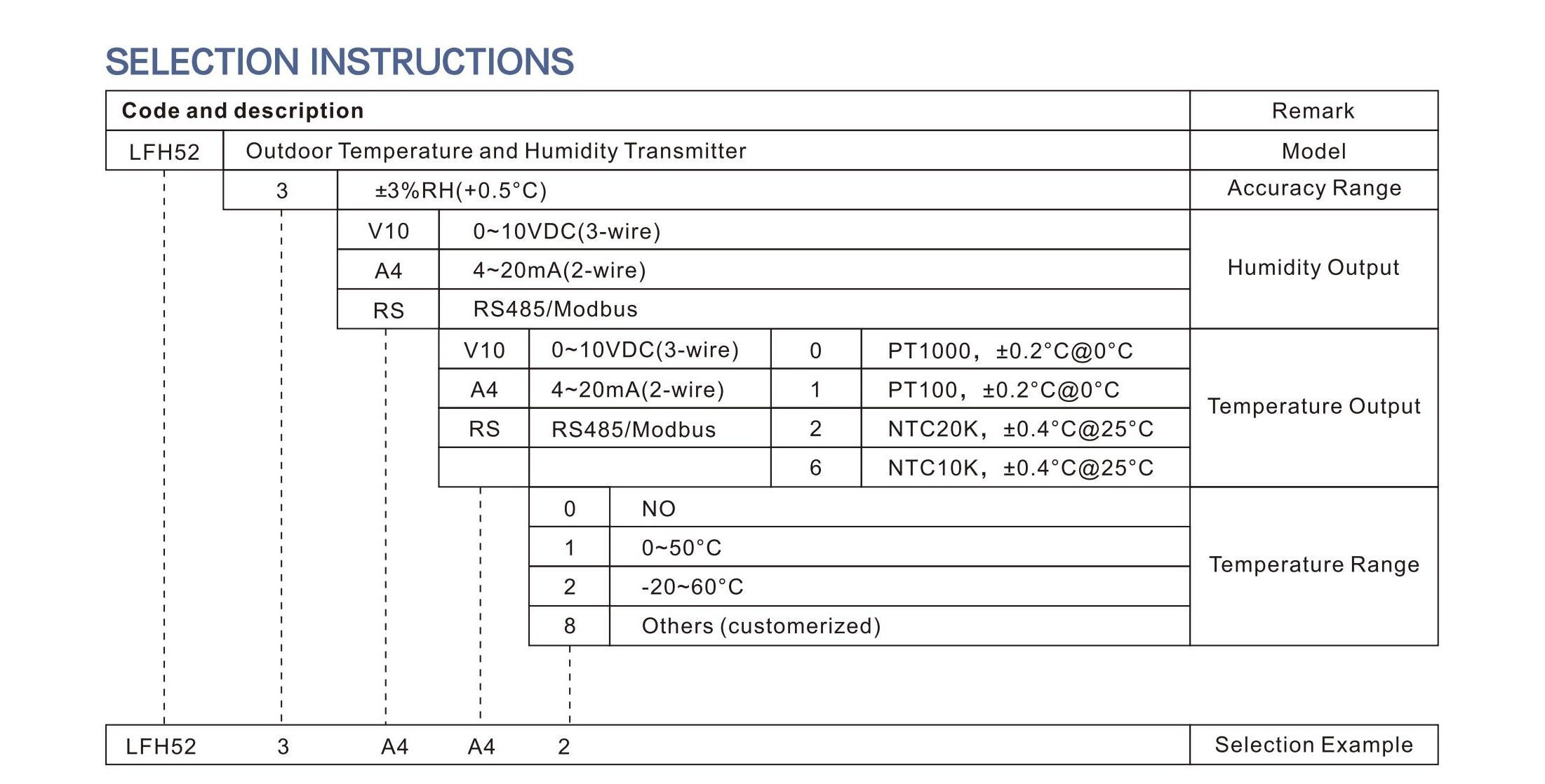| Temperature and Humidity Transmitter Probe LFH52 | |||||||||
| Relative Humidity | |||||||||
| Sensor | Digital | ||||||||
| Range | 0%~100%RH | ||||||||
| Output | RS485/Modbus,0~10VDC, 4~20mA optional | ||||||||
| Accuracy | ±3%@ 20℃ & 20 ~ 80%RH | ||||||||
| Temperature | |||||||||
| Sensor | Digital or RTD, see selection table | ||||||||
| Range | 0℃~50℃, -20℃~60°C etc | ||||||||
| Output | RS485/Modbus,0~10VDC optional | ||||||||
| Thermal Resistance | In Order Ref No. and Thermal Resistance Indexing Table | ||||||||
| Accuracy | Digital sensor: ±0.5°C@20°C RTD: Typical ±0.2~0.4°C@25°C, see selection table | ||||||||
| Power Supply | Voltage type/485 type 15-35VDC/24VAC±20% (isolated power suply is required for AC power supply) Current type 18.5~35VDC (RL=500Q) 8.5~35VDC (RL=0Ω) | ||||||||
| Output Load | ≤500Ω (Current type), ≥2KΩ (Voltage type) | ||||||||
| Shell Material | PC shell, PA6 probe rod,ABS protective cover | ||||||||
| Work Temperature | -20~60°C, 5%-95%RH (non-condensing) | ||||||||
| Protection Grade | IP65 | ||||||||
DIMENSION(mm)



1. Put the transmiter into the protective cover (as shown in Figure 2);
2. Fix the transmitter on the stainless steel bracket with screws and nuts (as shown in Figures 3 and 4);
3. Use screws and plastic expansion pipes to fix the transmitter on the wall (as shown in Figure 5 and 6), or fix it on a pillar with a clamp (as shown in Figure 7);

1. Only when the temperature output option is V10 or A4, you need to select the corresponding temperature range 1-8. Otherwise, need to select 0.
2. For example LFH52-3A4A42 represents the outdoor type, the temperature and humidity accuracy is ±3%RH (±0.5°C), the humidity output is 4~20mA, the temperature output is 4~20mA, and the temperature range is -20~60°C.
3.Exposure of the sensor probe of this product to high concentrations of chemical gases for a long time may cause the reading shift.
4.If it is necessary to install the clamp, please state in the remarks that the maximum diameter of the clamp is 150mm.
CAUTIONS
1.Avoid installation in areas that are prone to heat transfer and will directly cause a temperature difference with the area to be measured, otherwise the temperature and humidity measurement will be inaccurate.
2. Prevent chemical reagents, oil, dust, etc. from directly invading the sensor, and do not use it for a long time in dew condensation and extreme temperature environments. Do not perform cold or thermal shock.
3. The transmitter should be installed vertically to ensure protection.
4.When not in use for a long time, please store it in a dry environment.
 English
English  français
français  Deutsch
Deutsch  Español
Español  italiano
italiano  русский
русский  português
português  العربية
العربية  Türkçe
Türkçe  Zulu
Zulu 